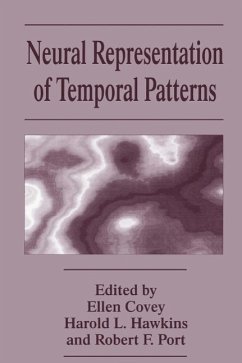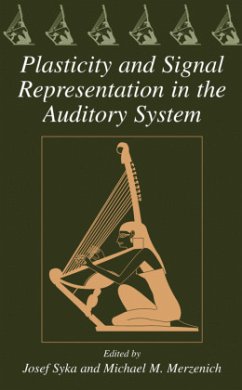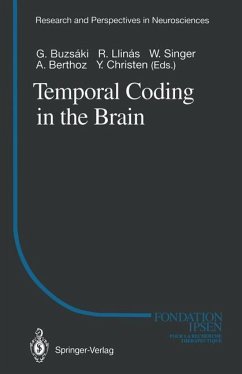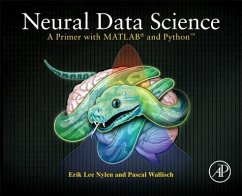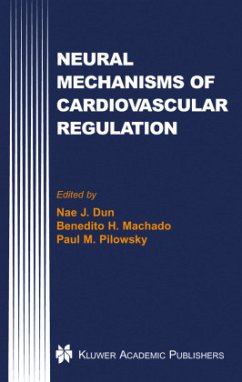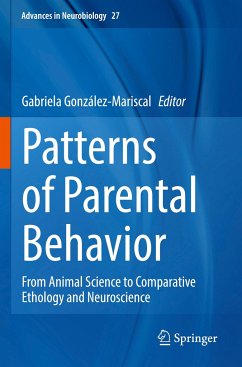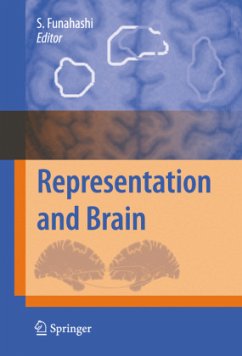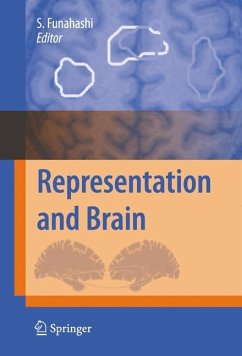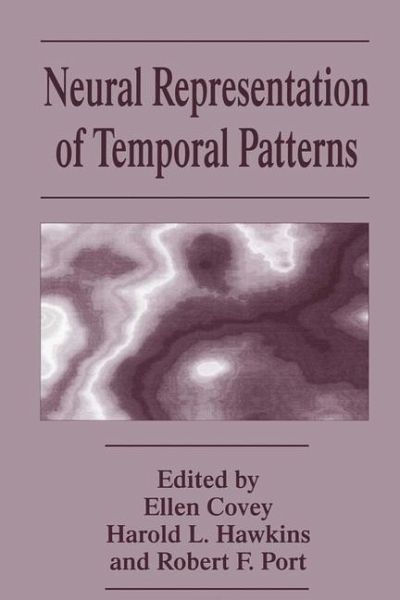
Neural Representation of Temporal Patterns

PAYBACK Punkte
20 °P sammeln!
Boththeanalysisandgenerationoftemporalpatternsarefundamental tasks ofbiological systems. Throughout the animal kingdom, every sensory modality is designed to analyze patterns ofinformation distributed over time. Human speech and music, a visual scene in whichobjects moveorastationaryscenethatwescanwithoureyes,apatternofpressurethat changesas we moveourfingertips overan object, theelectrical field detected byafish as it swimspastobjectsinastream, orthepatternofultrasonicechoesdetectedbyabatas itflies throughacave, alldependuponspecificdistributionsofinformationovertime. Itisperhaps evenmoreobvi...
Boththeanalysisandgenerationoftemporalpatternsarefundamental tasks ofbiological systems. Throughout the animal kingdom, every sensory modality is designed to analyze patterns ofinformation distributed over time. Human speech and music, a visual scene in whichobjects moveorastationaryscenethatwescanwithoureyes,apatternofpressurethat changesas we moveourfingertips overan object, theelectrical field detected byafish as it swimspastobjectsinastream, orthepatternofultrasonicechoesdetectedbyabatas itflies throughacave, alldependuponspecificdistributionsofinformationovertime. Itisperhaps evenmoreobviousthatallformsofaction mustincludeatimedimension. Walking,running, talking, reaching for an object, writing, orpressing keys in aparticularorderall require the generation ofspecific patterns of muscle contractions distributed over time. Finally, most forms of behavior require a transformation from a temporal pattern of sensory input to a temporalpatternofmotoroutput, aswell as interactivemodulationofsensoryinputsystems by motoroutput systems and vice versa. Despitethefactthattheprocessesofanimallifeareinseparablefromthetimedimension, mostexperimental and theoreticalresearch on neuralcircuitry hasemphasizedtheencoding ofstatic or spatially distributed information. Within recent years, a large body ofdata has becomeavailableregardingthetimecourseoffundamentalneuralprocesses,sothatwefinally haveatourdisposalsomeofthenecessarytoolsandinformationtodiscovermechanismsused by neural circuitry to deal with time. The study of how the nervous system represents information distributed overtime is currently an exciting new frontier in neurobiology, and one in which rapid progress is likely to be made overthe next decade.



